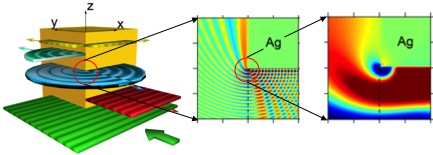Hong Koo Kim Professor, Electrical and Computer Engineering
Research
Nano-optics/plasmonics; nanoelectronics; nanosystems-on-a-chip
Professor Kim's research in nano-optics area focuses on: elucidation of the mechanisms of the interactions of light and metal at nanoscale; visualization of surface plasmon dynamics and interplays between polarization charges, electromagnetic fields, and energy flow on nanostructured surfaces of metal and dielectrics; utilization of these interactions in a controlled manner to enable novel functions of beam shaping and spectral filtering that can go beyond the conventional diffractive/refractive optics limits.
His research in nano-electronics area deals with developing a new class of devices that offer femtosecond transit time operating at a single-electron level at room temperature. The operating principle involves ballistic transport of electrons in localized nanochannels. This study aims at developing a fundamental understanding of the charge transport process and its application to ultrafast, low power device operation.

In nanosystems-on-a-chip research his group investigates multiscale integration of nanostructures into hierarchical systems involving various functional materials such as wide bandgap semiconductors, ferroelectric films, and plasmonic nanostructured materials. Single-domain ordered nanochannel arrays with controlled symmetry have been developed on macroscale area of wafer surface using a directed self-organization method, and have been investigated as an interaction medium in optical, electrical, chemical, and biological domains. Surface-plasmon phenomena occurring in nano-optic structures are of particular interest, since many novel properties can be derived from those and can be incorporated into an on-chip configuration for interaction with other functional materials. His group investigates plasmonics as an enabling technology for implementing nanosystems-on-a-chip that offer multifunctionality across the heterogeneous domains. He has authored five patents in nanotechnology area: self-organized nanostructured wafers; metal nanolenses; chip-scale optical spectrum analyzers and multispectral imaging devices; nano-optics enabled photovoltaic devices; single-electron-level ballistic devices.
